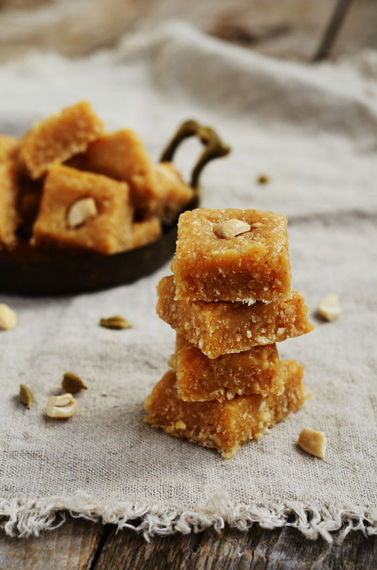From the big festivals like Easter, Ramadan or Diwali to regional celebrations - the food adds a delicious story-line to every occasion. Growing up in India, I share my personal account of how I was drawn to a world where food entwined culture, art and religion.
India and food seem to be synonymous with hospitality, culture and celebration. However, the significance of food during festivals is more than a mere prop and a delicious touch - the chosen dish to celebrate the gods tells us stories, dictates lifestyles and carries tradition.
I grew up in a South Indian Hindu house, attended a Christian school and had a religiously diverse set of neighbors in the quaint suburb of Jayanagar, south Bangalore. Amidst glorious weather, coconut trees and colorful houses, coming from a Tamilian-Brahmin family (one of the many communities under Hinduism) meant religion was an everyday lifestyle. At school, we were regularly told stories of The Bible; and with festivals celebrated every other week in India, it was one jolly good excuse to look forward to a different dish within the community.
My grandmother would make lunch-time fun by reciting stories from Hinduism - I got to learn about gods that could fly, demons who could change shape, mighty battles and love conquering all. A favorite tale ties in with a delicious sweet called 'modak' - rice dumplings with a coconut jaggery (palm sugar) filling served during Ganesh Chathurthi, the birthday of the Hindu God Ganesh. The house would carry the scent of sandalwood incense and caramelized jaggery; no sneaky bites my grandmother would say, as you are only allowed to devour the sweet after you complete the ceremony. Making an appearance in every idol and painting of Lord Ganesh, the modaks were said to be symbolic of his dedication and wisdom to his parents Shiva and Parvati.

Burfi - made with condensed milk, sugar and exotic spices from saffron to cardamom, most temples prepare this as auspicious offerings for devotees.
When in South India, even for a day one cannot ignore the extensive use of the banana leaf. One of the stories goes that a sage wanted to turn his wife into a banana tree as punishment, in return she asked to be of use to the Gods, and as a result the banana leaf is a requisite for everything auspicious in Hinduism. In noble houses, the banana leaf would be placed in copper, silver or gold plates to denote status.
During a Hindu occasion when sitting down for a traditional meal, the sweet dish is the first to be served as it is a palate cleanser that prepares the taste buds. In fact, the selection of dishes are planned to perfect the balance of taste and texture. The order in which the food is served is also of importance; the fiery lentil curries come first, and the meal ends with yogurt or buttermilk to restore acidity to the stomach after those explosive flavors.
For Hindus, the 'B' word is supposed to be a big no-no (beef, of course); one only needs to the check the current national news to see that this topic is enough to ruffle up the whole nation. A memory I can never forget is when I innocently swapped lunch at school and came back home with a serving of beef - it was too chewy for my liking. My poor conservative grandmother's shrill voice started reciting every Hindu god's name. In fact she woke up earlier the next morning to do a special chanting session, praying for mercy on my behalf. For the next two weeks - her stare made me melt away to my room. Dramatic then, but brings a comical moment to me now - however the lesson remains.
Around Ramadan, I would notice my Muslim friends breaking their day-long fast at sunset with dates. I found out that apart from the date's highly nutritious value it is in fond remembrance of the Prophet Mohammed, who had dates as a part of his stable diet. Ramadan was also a period to practice humility, where I would see my Muslim neighbors offering food to lines of poor people.
Studying in a Christian school, we would sing songs from our emerald green hymn books; I will never forget the Bible teacher who was in a permanent state of cheer. She would narrate stories with the help of a pin board adding pictures for a colorful touch. The symbolism of food had its prominence - a single bite of the forbidden fruit in the Garden of Eden was enough to spiral Adam and Eve into a world of chaos. The bite signified yielding to temptation, going against the law and facing the consequences. Throughout the Bible acts, Jesus often represented himself with 'bread' and 'wine', from feeding thousands to turning water into wine. The practice is followed in Holy Communion ceremonies, which bring people together to share bread and wine. The most sensational perhaps is 'The Last Supper', which would be recited around Easter. The chapter inspired Renaissance artist Leonardo Da Vinci to create a fresco painting that sparked copies, theories and books for generations. This was when Jesus foretold his crucifixion asking his disciples to remember him, with the breaking of bread and drinking wine.
To know that food represents layers of symbolism, feels like a treasure map leading to a historic vault. Food in Indian culture is like the usher at a wedding - doesn't really steal the show, but most certainly steers it. The word 'foodie' talks about the love for food, but it was really through food that I developed a love for tradition, spirituality, family and religion.